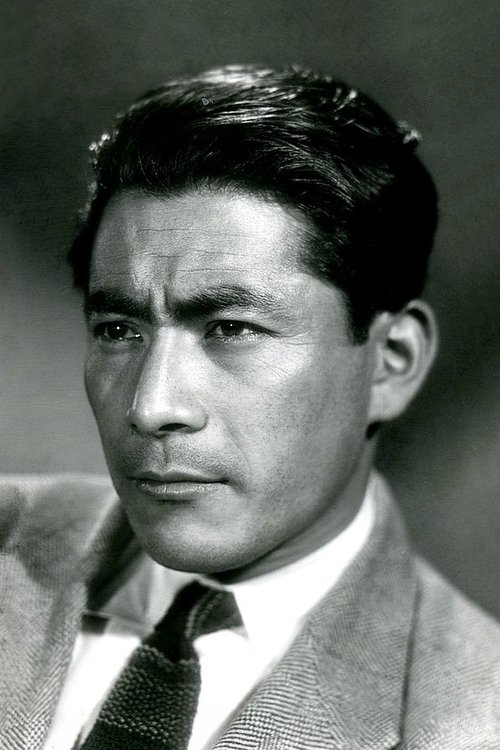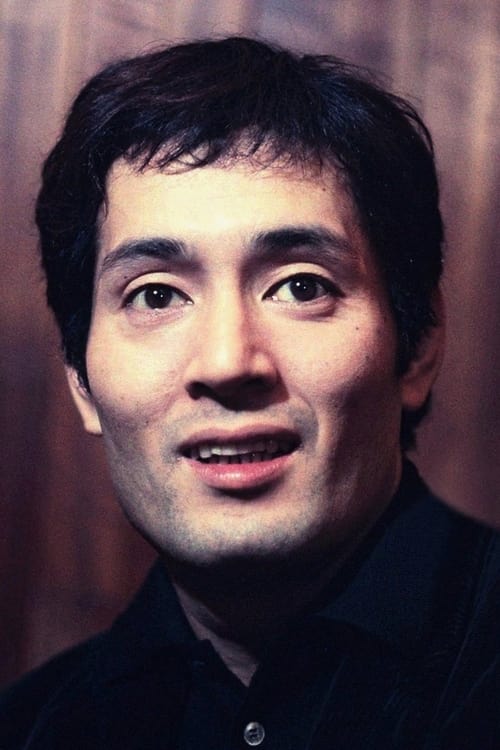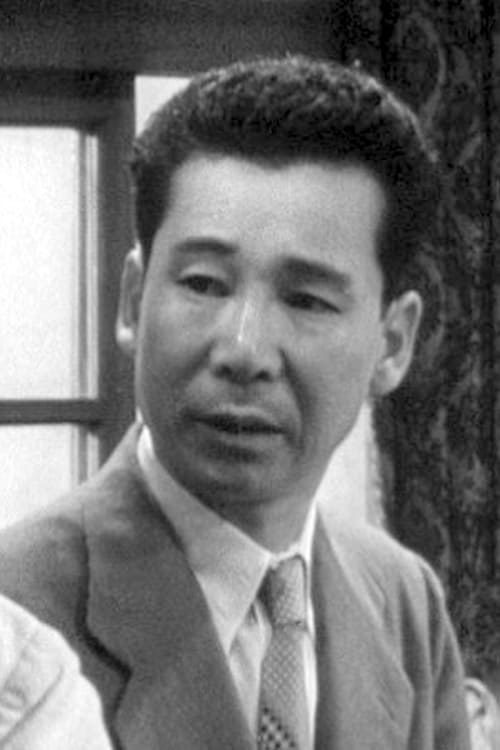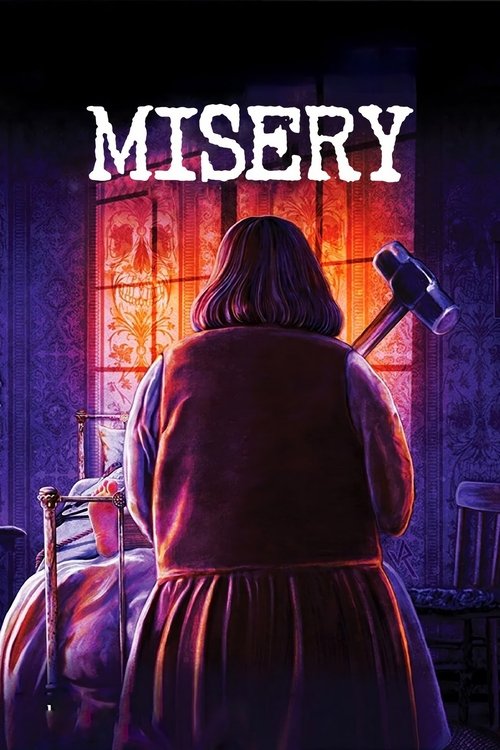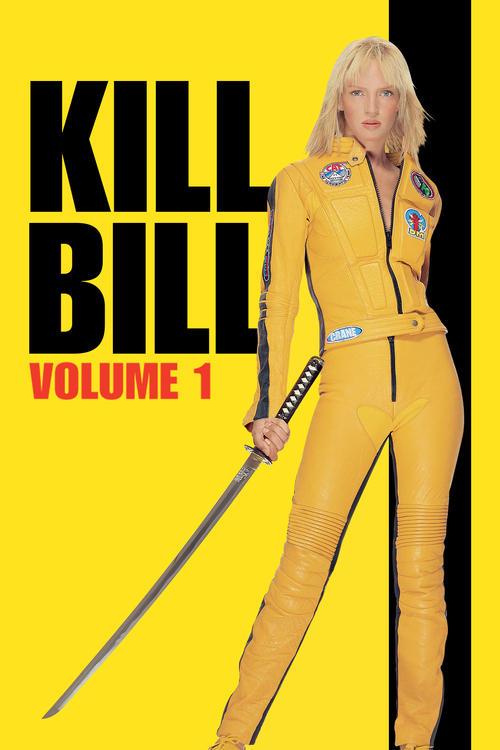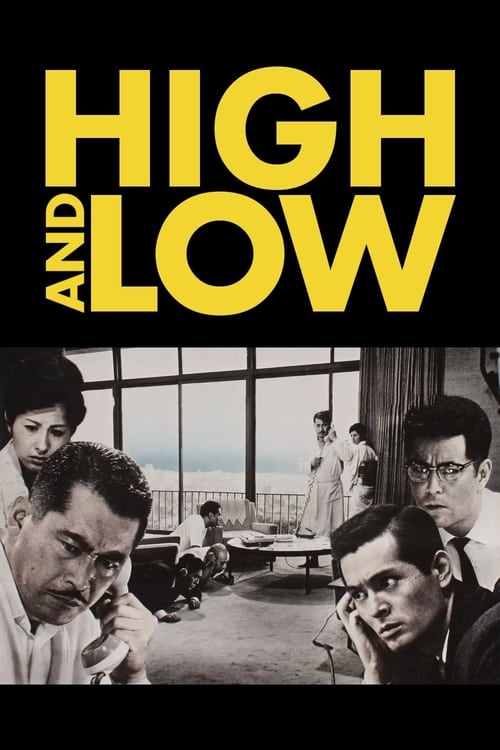
High and Low
In the midst of an attempt to take over his company, a powerhouse executive is hit with a huge ransom demand when his chauffeur's son is kidnapped by mistake.
Dialogues from Movie High and Low
Quotes from Movie High and Low
Memorable Scenes from Movie High and Low
The Kidnapping Revelation
The moment when Kingo Gondo learns that his son has been kidnapped is filled with tension and disbelief. As Gondo is about to finalize a huge business deal, the shocking news comes through, shattering his world. The camera captures his pale face amidst the luxury around him, emphasizing the contrast between his high status and the grave situation. The pivotal moment peaks when he realizes the kidnapper has mistaken his son for the chauffeur's child. This twist intensifies his emotional turmoil.
Context: Gondo, a successful businessman, is at a critical point in his life, poised to secure his family's future, but this crisis not only threatens that but also tests his moral and ethical boundaries.
Interrogation Room Breakdown
During the intense questioning of the kidnapper, the police manage to reveal his motivations and desperation. The room is dimly lit, and the kidnapper's emotional outpouring drives home the harsh realities of poverty and crime. The tension spikes when he vehemently explains why he felt forced to commit such a crime, flooding the scene with complicated emotions. Gondo's reaction, torn between disdain for the kidnapper and compassion for his plight, creates a profound moral conflict.
Context: As the investigation unfolds, Gondo grapples with his feelings about wealth, privilege, and the social divide, leading to a deep reflection on humanity.
The Police Chase
The heart-pounding chase scene where the police race to find the kidnappers. The urgency is palpable; every second counts. The shots of officers sprinting through the busy streets, the sound of sirens blaring, and the chaos unfold, encapsulate the desperation to save the child. The pivotal moment arrives when they nearly catch the culprits, but the tension breaks when they escape, leaving viewers breathless and anxious.
Context: This chase is a representation of time running out, showing the lengths the police go to in order to save Gondo’s son, emphasizing the desperate stakes involved.
Gondo's Moral Dilemma
Faced with the ransom demand, Gondo is torn between his principles and the need to save his son. He debates with his colleagues, whose voices become blurred as he pulls out his wallet, indicating his willingness to pay the ransom despite the consequences. This moment is so powerful visually, with close-ups on Gondo's strained face and shaking hands. The pivotal moment hits when he decides to use his money, showing a father's love juxtaposed against societal values.
Context: Gondo's character is fully developed here; he is more than just a businessman, but a father willing to sacrifice everything for his child.
The Awful Truth
When Gondo finally receives confirmation that his son is safe but at a great cost, the heart-wrenching moment when he breaks down is heart-stopping. The visuals show him collapsing to the ground, the weight of the world on his shoulders. The pivotal moment lies in the stark contrast of relief mixed with despair and guilt; the camera captures raw emotion as he wrestles with the outcome.
Context: At this critical juncture, Gondo is forced to confront the realities of his life decisions, further highlighting his transformation throughout the film.
Climactic Confrontation
In a gripping final confrontation with the kidnapper, Gondo expresses his anger and sorrow. The dialogue here is tense, filled with resentment and unresolved pain. The camera focuses on Gondo’s fierce gaze as he grapples with his humanity and the notion of justice. This moment peaks when Gondo confronts the logic behind the kidnapper's actions, leading to a powerful existential dialogue.
Context: This climactic moment brings together all the themes of morality, social disparity, and the internal struggle of Gondo, forcing him to face not just the kidnapper but himself.
The Aftermath
In the wake of the chaos, when Gondo reflects on what has transpired, he is shown in his office, isolated and hollow. The quietness of the room contrasts the earlier chaos outside. The moment speaks volumes as his expression reveals the deep scars left by the ordeal. The pivotal realization here is how wealth cannot shield one from pain. Gondo's monologue about wealth, responsibility, and guilt resonates strongly.
Context: This scene grounds the film’s commentary on wealth and privilege, showing that money does not equate to happiness or safety.
The Final Decision
Towards the end, Gondo makes a significant choice about his future, which reflects his growth. The close-up of his face shows resolve, but also deep-seated sorrow. The pivotal moment occurs when he decides to use his wealth for betterment rather than just personal gain, signaling a shift in his character. It highlights his transformation from a self-centered businessman to a more empathetic figure.
Context: Gondo is no longer just concerned about his personal success; he now understands the broader implications of his choices on society.
Police Investigation Insights
When the police delve into the lives of the victim and kidnapper, the scene juxtaposes their worlds. The visuals shift from Gondo’s opulent life to the bleak existence of the kidnapper, showcasing the stark social divide. The pivotal moment reveals the background story of the kidnapper, humanizing him and changing the viewpoint. The conversation among officers helps unravel societal issues.
Context: This moment serves to deepen the narrative, illustrating how environment shapes individuals and choices, intertwining both paths dramatically.
The Locket
A seemingly simple scene where a lost locket triggers a memory for Gondo. It starkly symbolizes his lost innocence and the life he hoped for his son. The emotional weight becomes evident as he stares at the locket, lost in thought. It's a turning point that reveals his yearning for connection amidst chaos. The atmosphere is quiet yet powerful, echoing his internal struggles.
Context: This moment encapsulates the haunting aftermath of the kidnapping, linking it back to his aspirations and dreams for his children.
Family Fallout
When Gondo's relationship with his wife deteriorates, the tension erupts in a heated argument about thoughtless wealth versus genuine love. The couple’s contrasting emotions become palpable, resonating through their shadows as they stand apart. The pivotal discussion about values reaches a peak, ultimately shifting their dynamic. Each line spoken is steeped in pain, regret, and love, and it’s deeply relational.
Context: This conflict shows how external pressures unearth underlying issues, emphasizing the theme of relational disconnection in times of crisis.
Coming Face to Face
In a tense scene between Gondo and the kidnapper, they share fierce, emotionally loaded words. As Gondo holds the kidnapper at gunpoint, the visuals capture the weight of each glance, linking their destinies. The pivotal moment is when they reach an understanding; both are products of their environments, summation of regret and desperation, leading to emotional confrontation.
Context: This confrontation becomes a powerful moment of existential reflection, challenging themes of social inequality and personal choices.
Revisiting the Past
Gondo walks through his childhood neighborhood, reflecting on the stark contrast to his current life. The visuals show nostalgia but also represent a loss of his younger self amidst his quest for wealth. The scene peaks when he recognizes the sacrifices made, wondering at what cost he achieved success, stirring profound realizations.
Context: This journey into his past serves to highlight the themes of loss and identity throughout the film, as Gondo grapples with his life choices.
Father's Love
Gondo’s heartfelt letter to his son after the kidnapping is a pivotal moment filled with raw emotion, love, and regret. As he writes, his emotions spill onto the page, and viewers feel his anguish and dedication. The visuals of him in solitude, surrounded by the remnants of luxury, sharply contrast with the somber nature of his words. The powerful moments unfold as he speaks to his son, reflecting on love’s complexities.
Context: This letter serves to solidify Gondo’s growth, emphasizing the theme of parental love amidst material wealth.
Community Response
The scene where the community bands together to support Gondo highlights the film's social commentary. Visuals of people from various walks of life rallying together emphasize unity in a time of crisis. The pivotal moment comes when they stand outside Gondo's house, showing solidarity. This imagery contrasts his status with the reminder of his humanity and the support he requires.
Context: This moment encapsulates the film's themes of community resilience and empathy despite social divides.
Collision Course
The parallel editing technique used when Gondo's family faces the aftermath of the kidnapping while the kidnapper grapples with his own troubles is striking. Tension crescendos at the intersections, exploring the consequences of their choices. They are both trapped in the web of their respective crises, making for a powerful, reflective moment.
Context: This editing choice reinforces the theme of interconnected destinies, revealing multiple sides to the narrative.
Closure
The end scene where Gondo watches his son play in safety brings catharsis. As he steps back into his life, the atmosphere is thick with a mix of relief and lingering sorrow. The pivotal moment occurs when Gondo vows to change, seen in his determined gaze. The visuals of a bright future for his son alongside a more grounded approach to wealth brings a bittersweet feeling, encapsulating his evolution.
Context: Closure intertwines hope with reality, reinforcing the film’s core themes on equality and responsibility.
Isolation and Reflection
A solitary moment where Gondo stares into the distance, reflecting on his choices amidst a backdrop of riches. The silence is loud, and the weight of his social position becomes evident. The pivotal moment erupts when he acknowledges the emptiness of his wealth without emotional connection, evoking viewer sympathy.
Context: This moment ties into the film’s overarching message about the pitfalls of materialism and the essence of connection.
The Culprit's Backstory
The scene revealing the kidnapper’s backstory serves as a turning point that humanizes him. As he recounts his desperation, the viewer's perspective begins to shift. It’s a powerful moment that exposes social inequities, highlighting the reasons behind his actions and offering a glimpse into his own pain.
Context: It deepens the narrative layers, emphasizing the complexities of crime intertwined with societal failures.
Gondo's Choice
The moment Gondo decides between paying the ransom or standing by his principles draws sharp lines between ethics and parental love. Hushed tones and fearful expressions crescendo to a heart-wrenching choice that emphasizes emotional depth. As he hands the money over, sorrow and resolve mix, showcasing his conflicting desires.
Context: This highlights the inner turmoil between wealth, love, and ethical responsibilities, marking a significant character turning point.
Reconciliation
The moment Gondo reconciles with his wife after the crisis captures raw vulnerability. They share a quiet moment together, where the camera focuses on their hands slowly reaching for each other, symbolizing healing. The dialogue exchanged is gentle and reflective, filled with the sounds of their shared grief. It’s pivotal as it represents forgiveness and renewed hope.
Context: This reconciliation explains both characters' transformations, highlighting the power of unity in adversity.
The Eye-Opening Documentary
As the police begin filming their investigation, Gondo watches the impact of crime on families through the lens. The stark realities reflected in the footage hits close to home. The pivotal moment comes as Gondo realizes that his family’s struggles are not isolated but part of a larger pattern of societal issues affecting many lives. It serves as a wake-up call for change.
Context: This scene strengthens the film's message regarding social accountability and the need for awareness.
Gondo in Solitude
In a powerful moment of solitude, Gondo gazes out the window reflecting on his life choices. As he stares at the bustling world outside, he grapples with the loneliness that success has brought him. It’s a quietly potent scene, visually showcasing his internal struggle when juxtaposed with his earlier achievements.
Context: This moment underlines the theme of isolation and loss, cementing the emotional depth within Gondo’s character arc.
The Burden of Wealth
The scene where Gondo reflects on his wealth as a burden rather than a blessing captivates the audience. The visuals of him surrounded by luxuries he no longer finds joy in convey a deep emotional weight. His inner turmoil is palpable through the dialogue, as he acknowledges the emptiness it brings.
Context: This moment plays into the film's overall critique of materialism and the realization that true happiness lies beyond possessions.
The Connection Lost
When Gondo tries to connect with his son following the trauma, the distance between them is palpable. Each awkward interaction reveals layers of trauma and the struggle to regain normalcy. The turning point comes when he reaches for his son, but the boy flinches, highlighting the lost bond. This tragic moment delivers a powerful emotional punch.
Context: It explores the effects of trauma on familial relationships, adding depth to Gondo's journey as a father.
Download App
Behind the Scenes from Movie High and Low
A Change in Adaptation
Akira Kurosawa's adaptation of Ed McBain's novel 'King's Ransom' was originally a comedic story.
Why it matters: Kurosawa's decision to shift the tone from comedy to a serious thriller significantly influenced the film's emotional depth and thematic exploration of social class and morality.
Casting Dilemma
Toshiro Mifune was initially considered for the role of Kingo Gondo but was unavailable due to scheduling conflicts.
Why it matters: This led to the casting of Toshiro Mifune's frequent collaborator, Tatsuya Nakadai, who delivered a powerful performance, enhancing the film's dramatic tension and keeping in line with Kurosawa's vision.
Innovative Cinematography
Kurosawa utilized multiple cameras to capture different angles during the climactic chase scene.
Why it matters: This approach heightened the intensity of the scene and enhanced the audience's engagement, making it one of the film's most memorable sequences.
Realism in Setting
The filmmakers used the actual city of Yokohama as a backdrop to ground the film in reality.
Why it matters: This decision helped to establish a palpable sense of place, making the socio-political commentary more resonant and impactful for viewers.
The Child Actor's Performance
The child actor playing Gondo's son, Akira Takarada, was actually terrified during many scenes due to the film's serious nature.
Why it matters: This genuine fear added an authentic note to the film, making the hostage situation more emotionally intense and relatable.
Kurosawa's Directing Method
Kurosawa was known for his meticulous preparation and rehearsal process with actors to ensure authenticity.
Why it matters: This led to a naturalistic performance style that contributed to the film's gripping tension and realism, forging a connection with the audience.
The Use of White Gloves
The kidnapper in 'High and Low' wears white gloves to avoid leaving fingerprints.
Why it matters: This small detail symbolizes the sterile, methodical nature of crime, adding to the film's atmospheric tension and foreshadowing the moral complexities within the plot.
A Symbolic Decision
Kurosawa chose to have Gondo wear a business suit throughout most of the film.
Why it matters: The suit serves as a symbol of his social status and the pressure he faces, highlighting themes of class struggle and personal sacrifice.
Original Score
The score, composed by Masaru Sato, was initially planned to be more traditional but evolved into a minimalist style.
Why it matters: This created a haunting atmosphere that underscored the film's psychological tension and allowed viewers to feel the characters' internal struggles more acutely.
The Elevator Scene
The film features a meticulously crafted elevator sequence that was shot in a single take.
Why it matters: This technical achievement demonstrates Kurosawa's commitment to innovation and reflects the film's escalating tension, leaving audiences on edge.
Language and Subtext
The dialogue is rich with subtext about societal values and personal sacrifices, which wasn't always apparent in the script.
Why it matters: This layered dialogue contributed to the film's complexity, allowing for multiple interpretations upon subsequent viewings and sparking discussion among audiences.
Hidden Camera Techniques
Kurosawa utilized low-angle shots to depict Gondo’s growing desperation as the film progressed.
Why it matters: These visual choices effectively manipulate the audience’s perception of power dynamics, making Gondo’s plight even more palpable and engaging.
The Influence of 'High and Low'
The film inspired many future crime dramas and thrillers with its exploration of morality and justice.
Why it matters: Its impact on the genre is evident as filmmakers continue to reference and draw inspiration from Kurosawa’s storytelling techniques and thematic depth.
Changing Perspectives
Kurosawa’s narrative shifts from Gondo to the police investigation throughout the film.
Why it matters: This approach creates a multifaceted view of crime and societal reactions, enhancing the complexity of the narrative and deepening viewer engagement with different characters’ moral dilemmas.
The Kidnapping Plot Twist
The twist involving the wrong child being kidnapped was not part of the original novel.
Why it matters: This creative choice added a layer of unpredictability to the story, challenging audience expectations and deepening the emotional stakes for Gondo.
Collaborative Screenwriting
Kurosawa co-wrote the screenplay with Ryūzō Kikushima and Hideo Oguni after extensive discussions about societal issues.
Why it matters: This collaboration brought diverse perspectives to the film and enriched the screenplay’s social commentary, allowing it to resonate with contemporary audiences.
The Importance of Subplots
The subplot involving the police detectives was carefully developed to reflect broader societal issues.
Why it matters: This enhancement of the narrative complexity led to more depth in character development and a richer thematic tapestry, inviting audiences to reflect on the societal context of crime.
Music and Sound Design
A careful balance of silence and score was employed to heighten emotional moments in the film.
Why it matters: This approach amplifies the viewer's emotional response, making key moments more poignant and impactful, allowing audiences to feel the weight of Gondo's decisions.
Symbolism of the Urban Landscape
The urban setting itself was designed to reflect the characters' psychological states.
Why it matters: This artistic choice deepens the viewer's understanding of the characters' struggles and transformations, making the setting a character in its own right.
Kurosawa's Role as Editor
Kurosawa took part in the editing process, ensuring the pacing complemented the storytelling.
Why it matters: His hands-on approach resulted in a tightly woven narrative that maintains tension, engaging the audience from start to finish.
Connection to Kurosawa's Other Works
Themes of duty and morality in 'High and Low' echo throughout many of Kurosawa's films.
Why it matters: This thematic continuity helps to establish Kurosawa as a formidable voice in cinema, inviting audiences to compare and analyze his societal critiques across different narratives.
Download App


